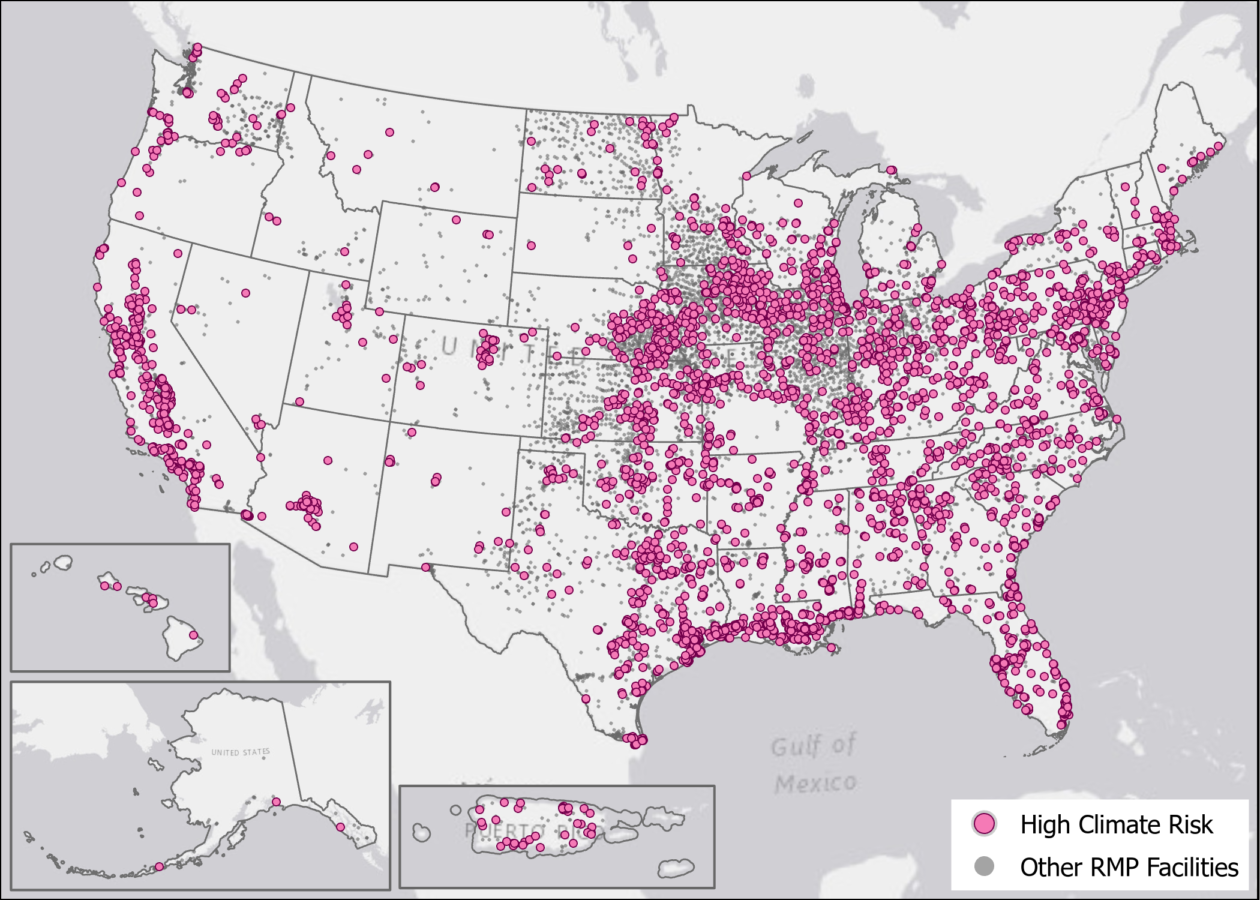Today, the Union of Concerned Scientists, Earthjustice, and the Center for Progressive Reform released a policy brief estimating the risks posed by natural disasters to Risk Management Program (RMP) facilities and the surrounding communities.
There are thousands of industrial facilities throughout the United States that are storing, transporting, and utilizing chemicals that have the potential to be lethal, carcinogenic, or just generally harmful to human health. Our new analysis finds that many of these facilities face risks from natural disasters projected to become more severe with climate change. In the forests of California, on the coast of Louisiana and across the flood plains of the Midwest, facilities are at risk of fire, flooding, and other damage that could lead to dangerous chemicals leaking into air and soil and endanger surrounding communities, workers, and first responders.
First, some background
EPA’s Risk Management Program (RMP) was created as part of the 1990 Clean Air Act Amendments requiring certain facilities to develop plans to prevent leaks, spills, and other chemical disasters. Part of the regulation of these RMP sites is known as the Accidental Release Prevention Requirements: Risk Management Programs Under the Clean Air Act or, more simply, the “Chemical Disaster Rule” which requires facilities to notify the surrounding communities of the chemicals being held in their facility and coordinate response to any potential chemical release. This aspect of the rule was rolled back in 2019 under the Trump administration such that hazardous facilities would no longer be required to take crucial steps to preventing chemical disasters such as exploring alternative technologies to decrease risk of disaster, pursuing third-party audits of their safety systems, or researching the ‘root causes’ of accidents after they occur.
It is vital that the Biden administration strengthen the RMP rule to include among other improvements, the requirement that climate change be considered in future RMPs to protect nearby communities. Currently, climate change is not among the required considerations for RMPs even though thousands of RMP facilities are located in areas known to experience fires, flooding, hurricanes, and other natural disasters that are projected to increase in both intensity and severity due to climate change.
The Report: Preventing ‘Double Disasters’
Today, the Union of Concerned Scientists, Earthjustice, and the Center for Progressive Reform have released a policy brief outlining the risks posed to RMPs and the surrounding communities by natural disasters and extreme weather, many of which are expected to increase in frequency and severity due to climate change.
In this brief, we used data on which regions of the US are expected to experience climate-related natural disasters in the future to perform geospatial analysis to determine the number of current RMP facilities within these regions. This analysis allowed us to estimate the number of facilities at-risk of climate-related natural disasters.
The results from our analyses are shocking! Using data from USGS, USDA FWS, FEMA, and a previous UCS analysis on future flooding due to climate change, we estimate that 30% of RMP facilities are in areas prone to wildfires, inland flooding, coastal flooding, or storm surge from hurricanes.

More detailed statistics and maps of at-risk RMP sites throughout the US can be found in the full policy brief.
To ensure that hazardous facilities are prepared for the impending effects of climate change, and the communities that live nearby are protected we recommended that the Biden administration take some of the following actions:
- Formally engage workers in facility preparedness and response planning
- Continue fenceline monitoring with public access to sampling data and timely community alerts
- Adopt RMP eligibility criteria to expand coverage to climate and natural disaster-vulnerable communities
- Prioritize enforcement resources to address heightened risks due to natural disasters and climate change.
- Bolster regulatory action with the Administration’s broader investment in climate, equity, and infrastructure spending and policy making

